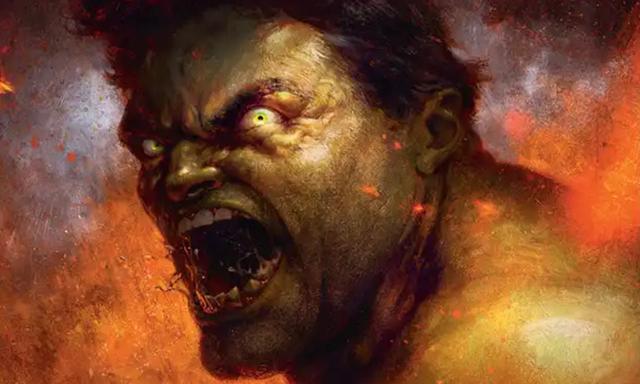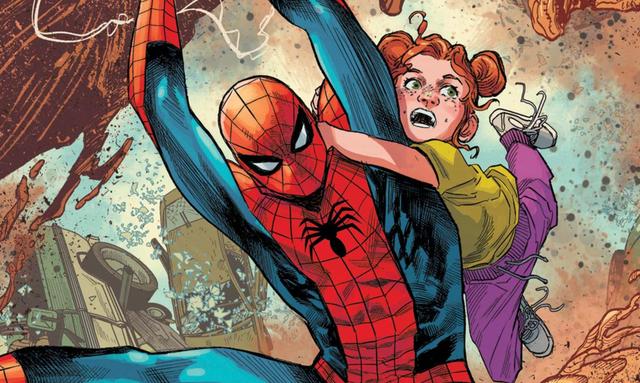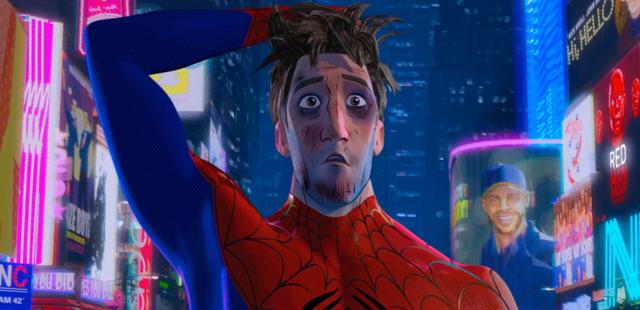If you click on a link and make a purchase we may receive a small commission. Read our editorial policy.
Selina’s Last Score: A Reflection on Catwoman: Lonely City
As the acclaimed DC Black Label miniseries Catwoman: Lonely City comes to an end, here’s how it reimagines the DC Universe and speaks to its core themes and characters.

Eisner Award-winning comic book creator Cliff Chiang takes the helm as writer, artist, colorist, and letterer of the four-issue DC Black Label miniseries Catwoman: Lonely City. 10 years after a cataclysmic incident claims the lives of Batman, the Joker, Nightwing, and Commissioner Jim Gordon, Catwoman is released from a lengthy prison incarceration to discover that Gotham City has long since moved past its age of costumed heroes and villains. Chiang provides the newly freed Catwoman with one last score, located in the heart of the abandoned Batcave, as she navigates this brave, new world that stands far different from the Gotham she knew before tragedy struck.
With Catwoman: Lonely City now concluded, the miniseries presents interesting themes and perspectives on the enduring Batman mythos. Here is a look back at Chiang’s thrilling take on Gotham as a city without its most iconic heroes and villains and how Catwoman continues to buck against the system and society to remind Gotham where it came from. And with Lonely City exploring a world without Batman, here’s how this Black Label story compares to other popular takes on Gotham following the death of its greatest hero.
What Happened to Gotham

Ten years prior to the start of Lonely City, the Joker discovered Batman’s true identity and unleashed a devastating attack on Gotham that became known as Fools’ Night. In the ensuing chaos, Nightwing died, and the Joker detonated a large bomb that killed himself and the Caped Crusader in a fiery blast. With his dying breath, Batman tells Catwoman to locate something from the Batcave known as Orpheus, but Selina Kyle is apprehended by the Gotham City Police before she can follow through and is incarcerated for her numerous crimes.
In the interim, Two-Face appears to become rehabilitated and is elected Mayor of Gotham City, bringing down crime across the city through a heavily militarized law enforcement agency that essentially turns Gotham into a police state. This increased authoritarianism similarly outlaws all costumed vigilantism throughout the city while Mayor Harvey Dent pushes an agenda to widely gentrify Gotham. Tired of Dent’s iron-fisted control over Gotham, Councilwoman Barbara Gordon runs a grassroots campaign for mayor against him, gaining strong support across Gotham to challenge Dent’s hold over of the mayoral seat.
Realized from prison, Selina reunites with many of her old associates from the costumed days of heroes and villains gone by in Gotham, including Poison Ivy and Killer Croc. Despite the Batcave remaining tightly protected, Catwoman leads this new crew to help launch the heist of a lifetime to seize Orpheus from inside of it while eluding Two-Face’s attention and helping Gordon topple the municipal dictator to inspire the people of Gotham once again.
Catwoman: Lonely City’s Ending Explained

Increasingly concerned by Gordon’s growing popularity in the polls, Two-Face seeks to stop his opponent’s mayoral campaign by any means necessary, including attempted assassination, though he is thwarted by Catwoman at every turn. Frustrated, Two-Face and his militarized police force intercept Catwoman and her band at the Batcave where they discover Batman’s final directive to Selina gave her complete access to his computer system. When Two-Face tries to seize Batman’s network for himself, a fierce battle unfolds, with Ivy killed while eliminating most of Dent’s private army.
Catwoman destroys Batman’s computer, causing a massive cave-in of the Batcave and Wayne Manor. Selina is rescued by Edward Nygma. After executing a police officer retreating from the disastrous battle, Two-Face confronts Catwoman and the Riddler himself but is defeated by a well-aimed Batarang thrown by Selina. Later, the murdered cop’s body camera exposes Two-Face as his killer, prompting his arrest and conviction, with Gordon easily winning the mayoral seat by a landslide. As the police state lifts from Gotham, a new gang of Catwoman-inspired activists run the streets while Selina finally begins to appreciate how far the city has come since her own incarceration.
Shadows of a Lonely City

The themes driving Catwoman: Lonely City not only tread in a sort of redemptive arc for Selina but also the value in second chances. Flashbacks to early encounters between Batman and Catwoman, with the Dark Knight initially rejecting her romantic overtures, end with Selina scoffing and telling the Caped Crusader to live a little. Over the course of the story, the freshly released from prison Selina relearns that life lesson herself as she not only reconnects with her friends on the outside but begins to appreciate the second chance that she has been given.
This concept of freedom and its repression fuels Lonely City’s central conflict; if Catwoman represents a sort of liberation and resurgent freedom, she opposes an authoritarian control led by Two-Face. Even the possibility of disruption frightens Harvey Dent throughout the story, from his police force’s iron-clad rule over Gotham’s streets to the murderous lengths he goes to ensure his reelection in the face of a legitimate challenger in Barbara Gordon. Dent has always been of two minds about everything and, as the pressure mounts, his renewed use of his scarred coin indicates that Two-Face is more than simply existing skin deep.
But, at the end of the day, redemption for Catwoman never was going to involve the character completely leaving behind her cat burglar ways and living the rest of her days in self-righteous piety and virtue. Catwoman has come a long way from being one of the most prominent figures within Batman’s rogues’ gallery to becoming a superhero herself but she has always been one that follows her own moral compass rather than being strictly tied to the Bat-Family’s. By the end of Lonely City, Catwoman may have inspired a gang of cat-themed vigilantes and personally brought Two-Face to justice but she has no interest in playing things by the book moving forward, despite Mayor Gordon’s wishes. Gotham City has a Catwoman again and though she fights on the side of angels, she is still one that does it in her own way.
Worlds Without a Batman

Lonely City is an exploration of how Gotham would look like without a Batman or wider Bat-Family, as a sort of cyberpunk dystopia first suggested by Frank Miller’s The Dark Knight Returns. In contrast to Miller’s vision of Gotham or similar stories like the crossover event 'Knightfall,' Scott Snyder and Greg Capullo’s 'Superheavy,' the absence of the Bat-Family does not lead to a sharp increase in crime, at least on the individual level. Instead, crime has become institutionalized through a systemic abuse of power, one with a familiar foe at its head.
Two-Face transforming Gotham into a totalitarian metropolis is reminiscent of the DC publishing initiative Future State, which featured a set of alternate futures for the DCU. Future State stories set in Gotham largely revolved around the idea of a cyberpunk despot, known simply as the Magistrate, that converted Gotham into a tightly surveilled city and enforced his law through a heavily militarized and futuristic police force. With vigilantism outlawed, the Bat-Family lived in hiding from the authorities rather than maintaining a tacit, if fragile, alliance towards a greater good.
Catwoman: Lonely City gave Cliff Chiang the opportunity to lean into his storytelling strengths, with big, super-powered action set pieces, dazzling vistas, and redesigned yet recognizable characters, all imbued with an inviting color palette. Approximately a decade after helping reinvent Wonder Woman with Brian Azzarello, Chiang has similarly provided a fresh take on Catwoman and created a story about atonement and empowered liberation that feels particularly resonant.
Written, illustrated, colored, and lettered by Cliff Chiang, all four issues of Catwoman: Lonely City are on sale now from DC. The miniseries hardcover collection goes on sale Dec. 13.
Catwoman: Tini Howard Sets Up Selina for a New Big Score
Follow Popverse for upcoming event coverage and news
Find out how we conduct our review by reading our review policy
Let Popverse be your tour guide through the wilderness of pop culture
Sign in and let us help you find your new favorite thing.
















Comments
Want to join the discussion? Please activate your account first.
Visit Reedpop ID if you need to resend the confirmation email.